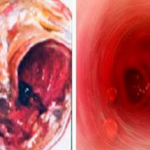14 Early Warning Signs Your Blood Sugar is SUPER High (Eat These Foods to REVERSE it)
Diabetes is a metabolic disease characterized by high levels of sugar in the blood for a prolonged period of time. However, not only people who are diagnosed with diabetes should take care about their blood sugar levels, but everyone else as well. The level of sugar in the blood should be concern to every person, because if someone who is otherwise healthy has increased blood sugar level for extended periods of time, it can contribute to diabetes or other serious health issues.
The spikes in the levels of blood sugar are not only caused by candy, cakes, and sodas, but by other ingredients as well. See which those ingredients are by continuing reading this article.
What are the causes of high blood sugar symptoms?
Some of the commonest symptoms of high blood sugar are if you feel always hungry, if you are gaining weight despite the fact that you are trying to reduce it, or if you have stomach issues.
Factors that add to high levels of blood sugar are:
- Stress
- Poor diet
- Use of some medications
- Lack of regular exercise
- Certain health conditions
What are the high blood sugar symptoms?
Having increased levels of blood sugar does not mean that you have diabetes. It is only a symptom of this condition. Even more, some people do not experience symptoms of high blood sugar at all.
The symptoms of high blood sugar are:
- Daily fatigue or exhaustion
- Dry and itchy skin
- Excess abdominal fat or weight gain
- Impotence
- Nerve problems
- Stomach problems
- Blurred vision
- Recurrent infections
- Constant hunger
- Slow healing of cuts and wounds
- Frequent urination and urination during the night
- Difficulties focusing
- Dry mouth
- Increased thirst
Using a Glycemic Index Food List to Decrease High Blood Sugar Symptoms
The glycemic index (GI) indicates how much a food that contains carbohydrates raises the levels of glucose in the blood. People have been ranking foods on the basis of the way the foods compare to a reference food – either glucose or white bread. A food that has high glycemic index increases the blood glucose more than a food that has a medium or low glycemic index. The GI uses a scale from 0 to 100. The higher the GI of a food, the more it increases the blood sugar levels. Pure glucose has a value 100 on this scale. Normally, the foods with high GI are quickly digested, and the foods with low GI are slowly digested. The symptoms of high blood sugar can be prevented, and the best way for it is for people to consume more low-GI foods, as they reduce the insulin levels. Moreover, foods with low glycemic index have numerous benefits, including the one we just mentioned, as well as their efficiency in weight control.
If one wants to prevent the symptoms of blood sugar, or if they want to take control over their weight, or simply want to improve their general health, they can use the glycemic index in order to achieve their goals much easier.
Glycemic Index Food List (for a few common foods)
One cup of butter beans – 31
One cup of hummus – 6
One cup of cherries – 22
One egg – 0
One cup of cashews – 22
One cup of broccoli – 10
One turkey sausage – 28
One medium yellow onion – 10
One cup of yogurt (without added sugar) – 23
One cup of walnuts – 15
Half a grapefruit, large – 25
One cup of kidney beans – 34
One cup of peas – 54
One large carrot – 47
One large banana – 52
One medium apple – 38
One medium orange – 48
One cup of spaghetti – 42
One cup of green grapes – 46
8 ounces of tomato juice – 38
8 ounces of pineapple juice – 46
The abovementioned foods are low in glucose and are ideal to consume. All foods below 54 on the scale of GI are low glycemic foods.
One cup of oatmeal – 58
One cup of brown rice – 64
One cup of white rice – 64
One tablespoon of honey – 55
One serving macaroni and cheese – 64
These foods with GI between 55 and 69 on the scale are called moderate glycemic foods. They should be consumed with caution.
One glazed donut – 76
One rice cake – 78
One slice white bread – 70
One medium baked potato – 85
Two cups of popcorn – 72
Corn flakes cereal – 92
50 grams of glucose – 100
The last list of foods contains high glycemic foods, which need to be avoided or completely eliminated from the diet. High glycemic foods are the ones with GI 70 to 100 on the scale.
Don’t Forget To Share With Your Friends And Family On Facebook, As You Might Help Someone In Need!
Source: healthadviceteam.com
Leave a Reply
You must be logged in to post a comment.





